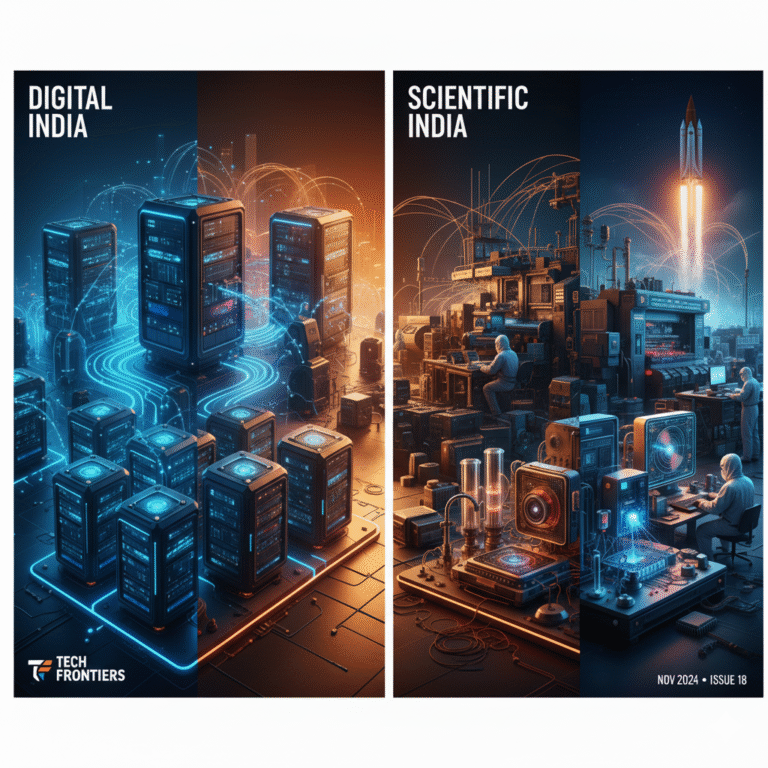Gist:
- Indian institutions like JNCASR and IIT Bombay are pioneering sodium-ion battery innovation.
- Sodium-ion batteries are emerging as safer, cheaper, and more sustainable alternatives to lithium-ion batteries.
- Strategic industrial partnerships like KPIT-Trentar aim to scale up production and reduce China-dependency.
- The technology could revolutionize India’s energy storage, EV sector, and grid resilience.
Introduction
The global transition toward cleaner energy has put battery technologies in the spotlight, with lithium-ion batteries dominating applications from smartphones to electric vehicles (EVs). However, rising lithium prices, limited reserves, and overdependence on China have sparked an urgent need for alternatives. Enter sodium-ion batteries, a promising solution gaining traction across the world—and particularly in India.
With abundant sodium reserves and growing energy storage demands, India is positioning itself at the forefront of sodium-ion research and development. In recent years, premier institutions like the Jawaharlal Nehru Centre for Advanced Scientific Research (JNCASR) and IIT Bombay have achieved breakthroughs that could transform the battery landscape. Additionally, industrial collaborations such as KPIT Technologies and Trentar’s new joint venture are translating academic innovation into scalable, commercial solutions.
Why India Needs a Lithium Alternative
The Strategic Vulnerability
India currently imports over 70% of its lithium-ion cell components, with China being a dominant supplier. This dependency raises national security concerns and exposes the supply chain to geopolitical risks.
Environmental Impact of Lithium Mining
Lithium extraction is highly water-intensive and environmentally damaging, especially in arid regions of South America where much of the world’s lithium is mined.
Rising Costs and Limited Reserves
As demand for lithium skyrockets due to the global EV boom, prices have soared, and resource scarcity is becoming more apparent.
Understanding Sodium-Ion Batteries

How Do Sodium-Ion Batteries Work?
Similar in structure to lithium-ion batteries, sodium-ion batteries replace lithium with sodium in the cathode and electrolyte. Sodium is more abundant and accessible, especially in countries like India with vast salt reserves.
Advantages over Lithium-Ion Batteries
- Cost-Effective: Sodium is 1000x more abundant than lithium, reducing material costs.
- Safer Chemistry: Reduced risk of overheating and thermal runaway.
- Environmental Friendliness: Extraction and disposal are less environmentally taxing.
- Temperature Tolerance: Performs better in extreme cold, making it suitable for remote or defense applications.
Key Indian Research Initiatives
JNCASR’s Breakthrough
In 2023, researchers at JNCASR announced a prototype sodium-ion battery with high energy density and long cycle life. This development addresses earlier concerns about sodium-ion’s lower performance metrics compared to lithium.
IIT Bombay’s Contribution
IIT Bombay has been working on sodium-ion anode and cathode materials using locally sourced raw materials. Their innovations in solid electrolytes have improved the battery’s thermal stability and efficiency.
ISRO and DRDO’s Interest
The Indian Space Research Organisation (ISRO) and Defence Research and Development Organisation (DRDO) have shown interest in sodium-ion batteries for satellite systems and defense-grade storage, owing to their tolerance to high radiation and extreme temperatures.
Industry Collaboration and Commercial Push
KPIT-Trentar Partnership
In 2024, KPIT Technologies and Trentar Limited formed a joint venture to set up India’s first dedicated sodium-ion battery production line. The project aims to create energy storage modules for EVs, solar grids, and telecom infrastructure.
Ola Electric and Other Startups
While Ola is investing heavily in lithium tech, it has also initiated research into alternative chemistries. Other startups like Log9 Materials are also exploring sodium-ion and aluminum-air technologies.
Challenges to Overcome
Energy Density Gap
Although improving, sodium-ion batteries still lag behind lithium in terms of energy density. This makes them less suited for long-range EVs but ideal for stationary storage and short-range mobility.
Scaling Manufacturing
India lacks the scale and supply chain maturity needed for mass production. However, early investment and government support through schemes like PLI (Production Linked Incentive) can bridge this gap.
Intellectual Property and Licensing
Most cutting-edge sodium-ion patents are currently held by China and Europe. Indian companies need to build indigenous IP or negotiate favorable licensing terms.
Environmental and Economic Impact
Resource Independence
India can significantly reduce its dependence on lithium imports, leading to stronger energy sovereignty.
Job Creation and Economic Growth
Localized battery production can generate employment in R&D, manufacturing, and logistics, further strengthening India’s green economy.
Sustainable Grid Storage
Sodium-ion batteries are ideal for large-scale renewable integration, helping manage solar and wind intermittency without the environmental downsides of lithium mining.
Global Perspective
CATL and China’s Lead
China’s CATL recently unveiled a sodium-ion battery for EVs, targeting mass production by 2025. India must act swiftly to remain competitive.
Europe’s Strategic Investments
Companies like Northvolt and Faradion (now acquired by Reliance) are investing in sodium-ion to hedge against lithium scarcity.
Policy Support and Future Roadmap
PLI Scheme and NITI Aayog
India’s PLI scheme for Advanced Chemistry Cells includes sodium-ion tech. NITI Aayog has proposed support for indigenous battery startups and global tech transfer agreements.
FAME III and Green Mobility
Future versions of the Faster Adoption and Manufacturing of Electric Vehicles (FAME) policy could include sodium-ion-powered EVs, giving them parity with lithium-based vehicles.
Academic-Industry Clusters
Collaborative innovation hubs can expedite commercialization. IISc, JNCASR, and IITs could act as anchor institutions.
Conclusion: India’s Sodium-Powered Leap Forward
India’s journey towards a sustainable, secure, and cost-effective energy future hinges on embracing innovative alternatives like sodium-ion batteries. While lithium-ion technology currently rules the energy storage sector, sodium-ion offers a viable path to diversification, reduced import dependency, and ecological responsibility.
With robust academic research, strategic industrial ventures, and forward-looking policies, India is poised to become a global leader in sodium-ion battery technology. The time is ripe for policymakers, investors, and innovators to rally behind this next-generation power source and light the path toward a greener tomorrow.









+ There are no comments
Add yours